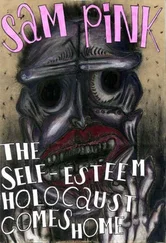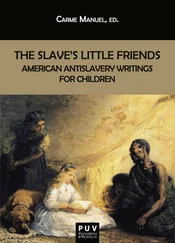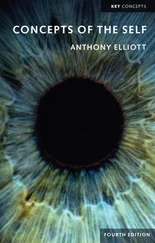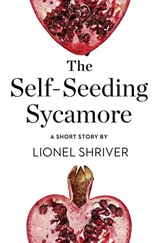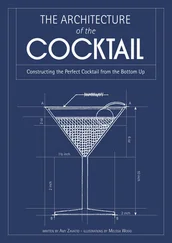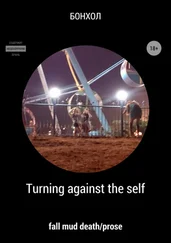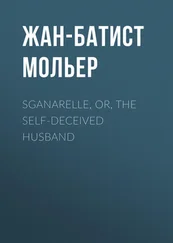AAVV - Constructing the Self
Здесь есть возможность читать онлайн «AAVV - Constructing the Self» — ознакомительный отрывок электронной книги совершенно бесплатно, а после прочтения отрывка купить полную версию. В некоторых случаях можно слушать аудио, скачать через торрент в формате fb2 и присутствует краткое содержание. Жанр: unrecognised, на английском языке. Описание произведения, (предисловие) а так же отзывы посетителей доступны на портале библиотеки ЛибКат.
- Название:Constructing the Self
- Автор:
- Жанр:
- Год:неизвестен
- ISBN:нет данных
- Рейтинг книги:3 / 5. Голосов: 1
-
Избранное:Добавить в избранное
- Отзывы:
-
Ваша оценка:
- 60
- 1
- 2
- 3
- 4
- 5
Constructing the Self: краткое содержание, описание и аннотация
Предлагаем к чтению аннотацию, описание, краткое содержание или предисловие (зависит от того, что написал сам автор книги «Constructing the Self»). Если вы не нашли необходимую информацию о книге — напишите в комментариях, мы постараемся отыскать её.
Constructing the Self — читать онлайн ознакомительный отрывок
Ниже представлен текст книги, разбитый по страницам. Система сохранения места последней прочитанной страницы, позволяет с удобством читать онлайн бесплатно книгу «Constructing the Self», без необходимости каждый раз заново искать на чём Вы остановились. Поставьте закладку, и сможете в любой момент перейти на страницу, на которой закончили чтение.
Интервал:
Закладка:
Recently, and drawing on the work of Judith Butler, particularly Bodies That Matter (1993), an emphasis on the body as site for the construction of the self has produced a number of interesting works. Disability and disease have been recurrent topics in many memoirs written by both men and women. Some of the most important studies are Thomas Couser’s Recovering Bodies: Illness, Disability, and Life Writing (1997) and Signifying Bodies: Disability in Contemporary Life Writing (2009), as well as earlier references to the body in Sidonie Smith’s Subjectivity, Identity, and the Body (1993), along with Paul John Eakin’s How Our Lives Become Stories (1999) and Living Autobiographically: How We Create Identity in Narrative (2008). Leigh Gilmore also discussed trauma and the raped body in The Limits of Autobiography (2001), with an interesting analysis of Dorothy Allison’s autobiographical novel Bastard Out of Carolina. This new direction in life-writing found its continuation in the volume New Essays on Life Writing and the Body (2009) edited by Christopher Stuart and Stephanie Todd, who present a collection of essays containing multiple perspectives on the topic (racialized bodies, disabled bodies, aged bodies, disfigured bodies, ill bodies, etc.). The volume also includes an illuminating Foreword by Timothy Dow Adams, who claims that “[n]ot only are our embodied selves a kind of on-going textual narrative of the course of our lives, but they are also directly connected to graphe , our ability to produce life writing” (x).
Constructing the Self in this Volume
Current discussions of southern life-writing are not alien to the critical theories and approaches to the self and autobiography mentioned above, as we hope to demonstrate in this volume. Neither is southern life-writing alien to the torrent of memoirs and other types of personal narratives published over the last few years. Given the diversity of autobiographical works covered in this volume, we prefer to use the term life-writing 4 to refer to the narratives produced by southerners to construct the self in time. New elements and types of life narratives have inevitably changed the way southerners construct the story of the self. Timothy Dow Adams claims that “autobiography is often an attempt to reconcile one’s own sense of self and one’s life, and for southerners, often conflicted over racial matters, the genre is therefore especially apt” (“Autobiography” 84). However, while it is still apt and appealing to discuss race, we believe that the current southern autobiographical impulse also responds to a multiethnic and multicultural South in which not only racialized bodies but also ill bodies, for example, find expression. Proof of that is Lee Smith’s Dimestore: A Writer’s Life (2016), a memoir in which she interweaves her own personal reflections with the reality of global migrant workers in the region (in her funny piece “Driving Miss Daisy Crazy; or Losing the Mind of the South”) and talks about mental and bodily disease and the role of writing (in “Kindly Nervous” and “The Little Locksmith”). In her seventies, like many other great southern women writers before—Eudora Welty and Elizabeth Spencer, for instance—Lee Smith has decided to look back to trace, through a collection of personal essays, her development as a writer. Dimestore , which Sandra Ballard discusses in this volume, is a contemporary exploration of self, moving and at times funny, told with Smith’s inimitable artistic craft.
Autobiography in the form of travelogue, frequently presented as a voyage of self-discovery, has figured prominently in southern literature and entered our discussion of life-writing. 5 Southern autobiography has often merged with travel literature to show the journeys, whether psychological or physical, southern writers undertake when they respond to the autobiographical impulse. Lillian Hellman, one of the authors Robert H. Brinkmeyer covers in The Fourth Ghost: White Southern Writers and European Fascism, 1930-1950 (2009), famously recounted in An Unfinished Woman , the first of her four memoirs, her trips to Spain to support Republicans during the Spanish Civil War. Mary Lee Settle, another supporter of leftist causes in Europe, wrote her last book Spanish Recognitions: The Roads to the Present (2004) at 87 in the form of a travelogue to narrate her second trip to Spain, carrying “the poems of St John of the Cross and St Teresa [of Ávila’s] dear autobiography” (10-11). In that second trip, she recognizes mountains that remind her of the ones she left in West Virginia, with their power to shape people and their past, but she also feels a sense of kinship that makes her say “they are our kin” (12). As Hellman and Settle seem to have sensed, at the root of autobiography are the notion of pilgrimage—as an inner and outer journey—and the idea of self-exploration, the same that can be found in Margery Kempe’s The Book of Margery Kempe (1436), the first autobiography written in English. Kempe’s 1417 pilgrimage to the shrine of St. James at Santiago de Compostela, Spain, forever associated the city with autobiography.
This volume contains a selection of essays by American and European historians and literature scholars who discuss southern life-writing. The following essays offer a self-portrait of the South and southerners as told in their rich body of autobiographical writing, reflecting a variety of readings and perspectives. These new readings on how southerners construct the self cover a wide spectrum, ranging from some of the earliest autobiographical writings in southern literature to contemporary and internationally renowned southern authors. Through discussions that incorporate many of the current critical approaches present in the theory of autobiography, these essays show the vitality of southern life-writing. The flexibility of the term life-writing, which now covers a wide range of autobiographical acts, the memoir boom and the impact at the turn of the millennium of what Leigh Gilmore calls “a culture of testimony” in The Limits of Autobiography (2) have certainly influenced the many and varied forms of recent southern life-writing. This volume, therefore, includes not only discussions of canonical black autobiography and classical autobiographies by black and white authors, but also poetry, as well as different varieties of memoirs—memoirs written for performance, family memoirs, autoethnographies, political memoirs, travel memoirs, and examples of the new memoir of disease and disability. This collection of essays also incorporates the personal reflections of a southern memoirist who felt the urge to write her own life story after the death of her mother.
The purpose of this volume is to provide an update on southern life-writing and present how southerners have variously constructed, deconstructed, reconstructed, and performed the self, tracing the evolution of the genre in classical works and showing its development in recent life narratives. This new southern life-writing is characterized by a wider range of personal narratives, themes, and approaches (including a transnational one), genre experimentation, performance, and the inclusion of other sites of autobiographical self-knowledge. The following essays, therefore, aim to show a variety of voices, forms and discursive constructions of the southern self. The organization of the volume loosely reflects the development of southern life-writing, from its beginning to more recent approaches to autobiographical works that incorporate contemporary critical theories and perspectives. Divided into five parts, the collection focuses first on the subversive quality of most African American autobiographies in their effort to construct a self that resists prejudice and discrimination. Second, it presents attempts at reconciliation of the self with itself and the other race. The third section examines the blurred boundaries between autobiography and fiction with the construction of fictionalized selves that question the validity of both truth-telling and the autobiographical pact. The following section explores the different forms of transgression that southern life narrators use to deconstruct the self (and even the memoir genre) and the masks they wear to tell their life stories. The final section presents real and allegorical pilgrimages of self-discovery, focusing on travel writing and the body as spaces through which southern authors construct and reconstruct the self.
Читать дальшеИнтервал:
Закладка:
Похожие книги на «Constructing the Self»
Представляем Вашему вниманию похожие книги на «Constructing the Self» списком для выбора. Мы отобрали схожую по названию и смыслу литературу в надежде предоставить читателям больше вариантов отыскать новые, интересные, ещё непрочитанные произведения.
Обсуждение, отзывы о книге «Constructing the Self» и просто собственные мнения читателей. Оставьте ваши комментарии, напишите, что Вы думаете о произведении, его смысле или главных героях. Укажите что конкретно понравилось, а что нет, и почему Вы так считаете.

